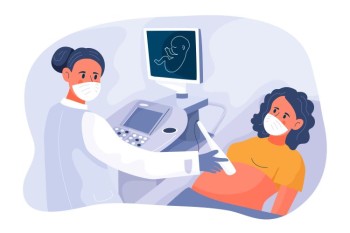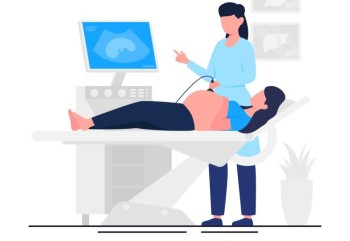
The anomaly scan, also known as a mid-pregnancy scan, is a crucial diagnostic procedure performed during pregnancy to assess the fetal anatomy for any potential abnormalities.
USG Anomaly Scan with Cost
Navigating Pregnancy: A Comprehensive Guide to
Anomaly Scan
Introduction to Anomaly Scan
The anomaly scan, also known as a mid-pregnancy scan, is a crucial diagnostic procedure performed during pregnancy to assess the fetal anatomy for any potential abnormalities. This article aims to provide an in-depth exploration of the anomaly scan, its significance, and various aspects related to the procedure.
Importance of Anomaly
Scan in Pregnancy
The anomaly scan holds paramount importance in prenatal care, serving as a key tool to identify potential birth defects or abnormalities in the developing fetus. Detecting these issues early allows for informed decision-making and appropriate medical interventions.
When is the Anomaly Scan Performed?
Typically conducted between the 18th and 22nd weeks of pregnancy, the anomaly scan is timed to coincide with the period when most major fetal structures are fully formed but before the baby becomes too large to visualize certain details.
Preparation for the Anomaly Scan
Preparation for the anomaly scan involves scheduling the appointment, wearing comfortable clothing, and arriving with a full bladder, which aids in obtaining clearer ultrasound images. It's advisable to inform the healthcare provider about any relevant medical history.
Procedure Overview
During the anomaly scan, ultrasound technology is used to capture detailed images of the fetus's anatomy. The sonographer examines various structures, including the head, spine, heart, limbs, and abdominal organs, to ensure normal development.
What Does the Anomaly
Scan Check for?
The anomaly scan checks for any abnormalities in the fetal anatomy, such as neural tube defects, heart defects, facial abnormalities, limb deformities, and other structural irregularities. It provides a comprehensive assessment of the baby's well-being.
Interpreting Anomaly Scan Results
Interpreting anomaly scan results requires specialized training and expertise. The sonographer analyzes the images to identify any potential issues, and a detailed report is generated for the healthcare provider to discuss with the expectant parents.
Indications for an Additional Anomaly Scan
In certain cases, additional anomaly scans may be recommended based on specific circumstances, such as unclear imaging results or the presence of risk factors that necessitate closer monitoring.
Advantages of Early Detection through Anomaly Scans
Early detection of fetal anomalies through anomaly scans empowers parents and healthcare providers to make informed decisions about medical interventions, treatment plans, and preparations for the baby's arrival.
Risks and Safety Measures
While the anomaly scan is generally considered safe, there are minimal risks associated with ultrasound exposure. Healthcare providers take precautions to ensure that the benefits of the scan outweigh any potential risks.
Comparisons with Other
Pregnancy Scans
Comparing the anomaly scan with other pregnancy scans, such as the dating scan or growth scan, highlights the unique focus on assessing fetal anatomy and detecting structural abnormalities. Each scan serves a specific purpose in monitoring the pregnancy.
Innovations and Advancements in Anomaly Scan Technology
Technological advancements continue to enhance anomaly scan capabilities, offering clearer imaging, 3D and 4D visualization, and improved diagnostic accuracy. These innovations contribute to a more comprehensive understanding of fetal development.
Patient Experience and Comfort
The anomaly scan is a non-invasive procedure, and most women find it comfortable. The duration of the scan is typically around 30 minutes, during which the sonographer communicates findings and addresses any concerns.
Follow-up Care and Recommendations
Following the anomaly scan, healthcare providers discuss the results with the expectant parents. Depending on the findings, further tests or consultations may be recommended. Regular prenatal care continues to monitor the pregnancy's progress.
Case Studies and Success Stories
Real-life case studies and success stories underscore the impact of anomaly scans in identifying and addressing potential fetal abnormalities. These narratives provide insights into the positive outcomes achieved through early detection.
Expert Insights and Recommendations
Leading experts in prenatal care share their insights and recommendations on the evolving landscape of anomaly scan technology. From interpreting results to offering support to expectant parents, their perspectives contribute to optimal prenatal care.
Conclusion
In conclusion, the anomaly scan is a pivotal component of prenatal care, offering a comprehensive assessment of fetal anatomy and facilitating early detection of potential abnormalities. Its role in guiding informed decision-making underscores its significance in ensuring a healthy pregnancy.
FAQs (Frequently Asked Questions) about USG Anomaly Scan
Is the anomaly scan mandatory during pregnancy?
While the anomaly scan is highly recommended, it is not mandatory. However, its benefits in detecting potential fetal abnormalities make it a valuable tool in prenatal care.
Can the anomaly scan reveal the baby's gender?
Yes, the anomaly scan may reveal the baby's gender if the parents wish to know. However, it's essential to communicate this preference with the healthcare provider beforehand.
Are there any risks associated with the anomaly scan?
The anomaly scan is generally safe, with minimal risks associated with ultrasound exposure. Healthcare providers take precautions to ensure the safety of both the mother and the developing fetus.
What happens if an anomaly is detected during the scan?
If an anomaly is detected, further diagnostic tests or consultations may be recommended to assess the severity and develop an appropriate plan of action. Support and guidance are provided to the expectant parents throughout the process.
Can the anomaly scan predict all potential birth defects?
While the anomaly scan is highly effective, it may not detect all possible birth defects. Some conditions may only become apparent later in the pregnancy or after birth.
Can the anomaly scan be performed at any time during pregnancy?
The anomaly scan is typically performed between the 18th and 22nd weeks of pregnancy, as this period allows for a comprehensive assessment of the developing fetus's anatomy.
Is it possible to detect all fetal abnormalities through the anomaly
scan?
While the anomaly scan is highly effective in detecting many fetal abnormalities, it may not identify all conditions. Some abnormalities may only become apparent in later stages of pregnancy or after birth.
Can the anomaly scan determine the baby's overall health?
The anomaly scan focuses on assessing the fetal for structural abnormalities. While it provides valuable information, it does not provide a complete assessment of the baby's overall health, including organ function.
Is the anomaly scan only for high-risk pregnancies?
The anomaly scan is recommended for all pregnancies, regardless of perceived risk factors. It serves as a crucial tool in identifying potential abnormalities, offering valuable insights for both low-risk and high-risk pregnancies.
Are there any dietary restrictions before the anomaly scan?
There are generally no specific dietary restrictions before the anomaly scan. However, it's advisable to follow regular prenatal care guidelines, including maintaining a healthy and balanced diet for overall well-being.
(0)
Login to continue



